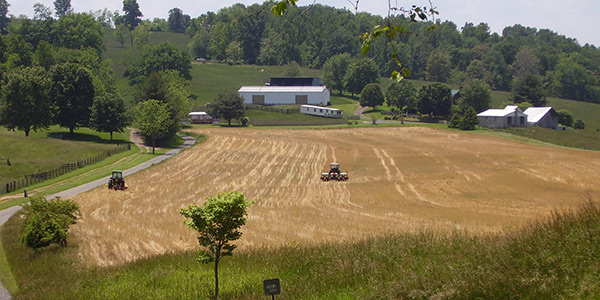
 Department of Conservation and Recreation
Department of Conservation and Recreation
Conserve. Protect. Enjoy.
 Department of Conservation and Recreation
Department of Conservation and Recreation

The Virginia Agricultural BMP Tax Credit Program began in 1998, providing financial incentives for the voluntary installation of BMPs that support Virginias nonpoint source pollution water quality objectives.
In 2021, the General Assembly and the governor significantly increased agricultural BMP tax credits in Virginia. Producers may take a credit against state income tax for actual out-of-pocket expenses for agricultural BMPs. The current Virginia Agricultural Best Management Practice Tax Credit offers a credit for twenty-five percent (25%) of the first $100,000 expended for implementing or installing agricultural best management practices. If a producer receives cost-share funds from the Virginia Agricultural Best Management Practices Cost-Share (VACS) Program, only the producers share of the project (i.e. their out-of-pocket expense) is used to determine the amount of the tax credit. Producers who have an approved Resource Management Plan and who are not receiving any VACS Program cost-share funds for a particular BMP may receive a tax credit for fifty percent (50%) of the first $100,000 expended for BMPs installed or implemented on the acreage included in the RMP.
The total amount of tax credit claimed may not exceed $75,000. If the amount of tax credit exceeds the taxpayer’s liability in a taxable year, the excess shall be refunded to the taxpayer by the Virginia Department of Taxation. In order to receive agricultural BMP tax credit, the producer must apply with their local Soil and Water Conservation District prior to installation of the BMP. The producer must also ensure they have an approved conservation plan. BMPs for which tax credit is requested will be inspected by the SWCD to ensure proper installation or implementation of the practice before the producer will receive a tax credit certification letter from their local SWCD.
Taxpayers must apply with the Virginia Department of Taxation to claim this credit. Applicants must submit Form ABM and supporting documentation by December 31 of the year following the credit year being applied. For example, if you are applying for a 2023 credit, the application must be submitted by Dec. 31, 2024. The total credit granted to all taxpayers is limited to $2 million for each fiscal year and will be issued on a first-come, first-serve basis. Once $2 million in credit approvals has been reached for that credit year, there will not be any additional credit issued for that year. Notification of the authorized credit amount must be received before the credit can be claimed on the taxpayer’s tax return.
Find more details about the Agricultural BMP Tax Credit program in the Tax Credit section of the Virginia Agricultural BMP Cost-Share Manual.
There is also a tax credit to encourage farmers to use conservation equipment. Currently an Equipment Tax Credit is available for the purchase of no-till or precision agriculture equipment, as outlined in the VACS Manual. Equipment eligible for this tax credit may include:
Individuals may claim a state tax credit of 25% of all expenditures made for the purchase and installation of equipment certified by the Virginia Soil and Water Conservation Board (VSWCB). The Equipment Tax Credit is retroactively available for taxable years beginning Jan. 1, 2021, through Dec. 31, 2025. The credit may not exceed $17,500 per individual/entity and must meet state-established criteria. Also, the farmer must have a Nutrient Management Plan (NMP) approved by the local SWCD. The VACS Manual, Section IV, outlines the criteria for qualifying equipment.

